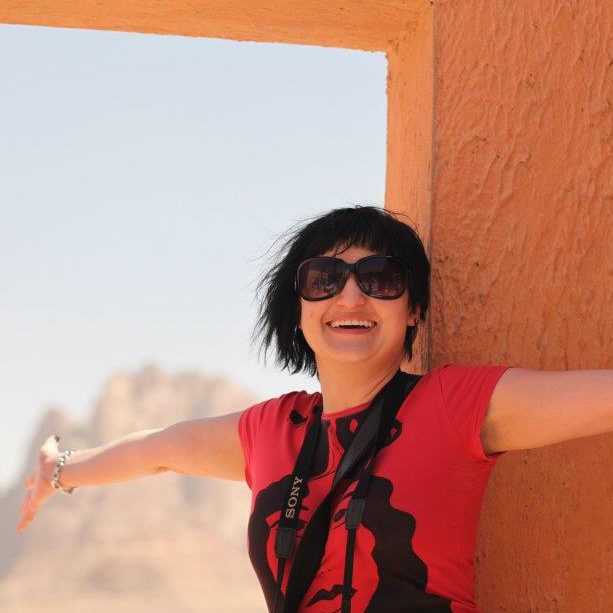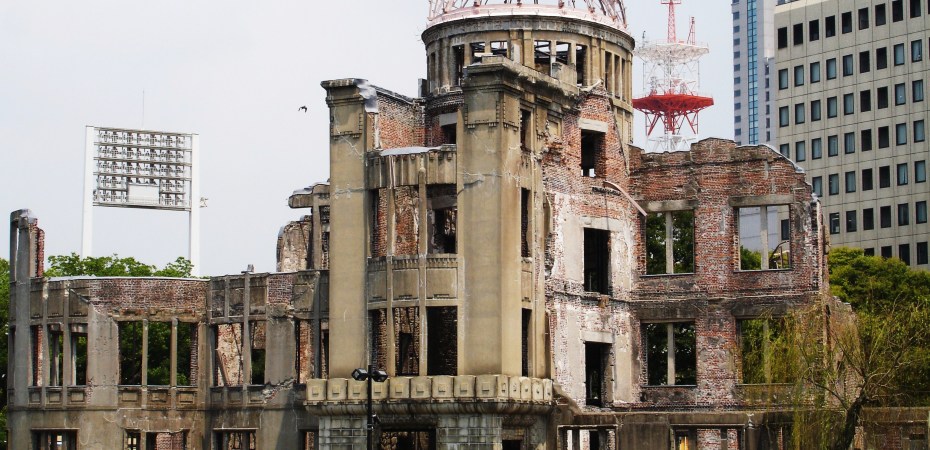The whole world knows about the atomic bomb that hit Hiroshima on August 6, 1945 where as many as 140 000 people were killed. Since then, thousands more have died from injuries or illness attributed to the radiation exposure of the bomb. Each year a memorial ceremony is held on 6 August for those who died and the few who still survive as well as pray for the realization of everlasting world peace.
They built what I think is a magnificent Peace Memorial Park,not only to memorialize the victims, but also to establish the memory of nuclear horrors and advocate world peace. On 6 August they hold the annual peace memorial service in memory of the atom bomb victims. I attended this service a couple of years ago and had the chance to explore the whole memorial park.
There are a couple of monuments spread out in the park each with a sad story to accompany it.
The saddest monument for me is the Children’s Peace Monument, a statue dedicated to the memory of the children who died as a result of the bombing. The statue “Tower of a Thousand Cranes” is of a girl with outstretched arms holding a folded paper crane over her head. It was erected in the memory a Junior High School girl, Sadako Sasaki, who died of an A-bomb disease (leukemia). When Sadako became sick, she decided to fold a thousand cranes (a Japanese symbol of good luck and long life) in the hopes that they would bring her health back. When she died, Sadako’s classmates decided to build a statue in her memory. This was a reminder of how children still believe in miracles even when there is no hope. This story brought tears to my eyes and made my heart ache for all the children who died this way.
Nearby were thousands of brightly covered origami paper cranes that people bring daily to place next to the Sadako statue.
People from around the world fold paper cranes and send them to Hiroshima where they are placed near the statue in glass cases. Family and survivors all added brightly coloured streams of origami cranes to the collection that day. I attended the free crane folding class held by students that day and added a few bright origami cranes of my own to the collection.

At one end of the large, green park was the atomic bomb dome also known as the A-Bomb Dome. It is only the skeleton of the building that remains and is a stark reminder that this place was once reduced to ashes. This was one of the few buildings that remained standing after the atomic bomb hit Hiroshima, although only the dome and some of the outer walls survived the blast. The skeletal ruins of the former Industrial Promotion Hall were the closest structure to the hypo-center of the nuclear bomb.
Most of the other city buildings were destroyed, along with an estimated 78,150 people who perished that day. After walking through the park and listening to all the horror stories that accompany the statues and memorials I was emotionally drained!!
I was disgusted at the horrors that we as humans inflict on each other and all the pain and destruction we cause.
I just wanted to sit in a corner and cry!
Published as part of Throwback Thursday, a weekly reminiscent movement where you re-post past events or photos. They can be from years ago or from just a few days ago. Its a great way to look back fondly on some of your favourite memories……













I didn’ find Hiroshima as bad as the Killing Fields of Choeung near Phnom Penh. The horrific torture and deaths of more than 20,000 people in Cambodia somehow seemed infinitely worse to me because they were killed in a vicious civil war led by a megalomaniac whereas Hiroshima was part of an ongoing World War and whatever one wants to believe as to the reasons for dropping the bomb, it did bring an end to the war with Japan. It is an unbearably sad place but the monument is beautiful and leaves one with some hope for the future. Sad too are the graves of the young men who died building the Death Railway in Thailand and who are buried in Don Rad and Chungkai cemeteries in Kanchanaburi province. You probably visited them when you were on the Bridge at the River Kwai.
Nice pictures, by the way, and I enjoyed being reminded of my visit there.
LikeLike
Our species is death and destruction.
LikeLiked by 1 person
Yes, unfortunately humans are great at destroying each other.
LikeLike
I think that it is good to have such memorials so that people can always remember. I sometimes feel that people forget history really fast when they don’t see or feel the impact themselves so being able to let them see it for themselves is a good reminder, regardless which side you were on.
LikeLiked by 1 person
I definitely agree with you Sha. These things need to stay fresh in our memories so that thay are not repeated!
LikeLike
Along with the atrocities elsewhere, it serves to remind us that we must never let tyranny rule.
LikeLiked by 1 person
A good reason to stand up for what is right and to say something when things are unfair or unjust.
LikeLiked by 1 person
Probably it would be the time to go back to Hiroshima again. The last time, I was too small to understand everything. Thank you for your beautiful post.
LikeLiked by 1 person
You are very welcome. It is true, once we are a bit older we can actually apreciate these memorial gardens and why they are so important.
LikeLiked by 1 person
Thanks for sharing! The building with the dome has a strange and scary feeling to it. I`m glad I came across your blog! You`ve been to so many places! Please have a look at my blog and let me know what you think! http://bmyshot.wordpress.com/
LikeLiked by 1 person
Thank you and a very warm welcome to my world! I agree, that ruined dome is quite eerie
LikeLike
Sad and extremely sobering, places like this and the concentration camps in Europe serve to remind us of the atrocities man can commit and you would think that we would learn from these mistakes but still the horror and the violence continues.
On a brighter note, the origami cranes are beautiful and the children who continue to make them provide hope for the future.
LikeLike
Thanks, I agree! We should be reminded of what has happened and should not commit these horrors again…if only the world would listen and learn!
I love the origami cranes, they are such a beautiful symbol of hope and peace!!
LikeLike
I’ve always wanted to go to Hiroshima and someday I hope to make it there. Sometimes it’s good to go to these emotionally moving places so we can really remember, and feel, the pain and heartbreak of their history. I’ve been to the Holocaust Museum in D.C. and that is emotionally draining as well. I’m sure it’s the same as Auschwitz.
I love the story about the girl and her paper cranes and the other children who keep her story alive. Your photos are beautiful too. 🙂
LikeLike
Thank you!! Yes, I think going to such memorial services or museums are very draining but a great way to remember and commemorate the big losses of life. Such stories as the one with the cranes definitely show how hope can change and bring people together!
LikeLike
I agree! Great share, really.
LikeLike
I love this post. Probably similar to what I felt visiting Auschwitz – numbing and emotional.
LikeLiked by 1 person
I imagine the feeling must be similar. I really want to visit Auschwitz some day although I know it is going to be upsetting.
LikeLike
Very similar I would think: quiet and sobering
LikeLike
“Man is the only animal that deals in that atrocity of atrocities, War. He is the only one that gathers his brethren about him and goes forth in cold blood and calm pulse to exterminate his kind. He is the only animal that for sordid wages will march out … and help to slaughter strangers of his own species who have done him no harm and with whom he has no quarrel … And in the intervals between campaigns he washes the blood off his hands, and works for the universal brotherhood of man with his mouth.”
– Mark Twain
LikeLiked by 1 person
These words are so true and sad at the same time!
LikeLike
Very impressive. Thank you for sharing.
LikeLiked by 1 person
Thank you!! It was an amazing experience and I was so glad that I got the opportunity to be there for a memorial service.
LikeLike
Beautiful post, Janaline. I think I too would be overwhelmed by this visit. The paper cranes are lovely, a bright spot to the day no doubt.
LikeLiked by 1 person
They were the bright spot of the whole day. Very touching that people still fold and hang new ones each memorial day!!
LikeLike
when Hiroshima was hitted by atomic bomb Japanese army left Indonesia and Indonesia took this chance to prepare for its independence in the 16 following days
but I agree that peace should be # 1
LikeLiked by 1 person
I understand that they did some awful things but I think that what happened here to all these innocent people was too cruel and horrific for words.
LikeLike
yes.. I agree with you
LikeLike